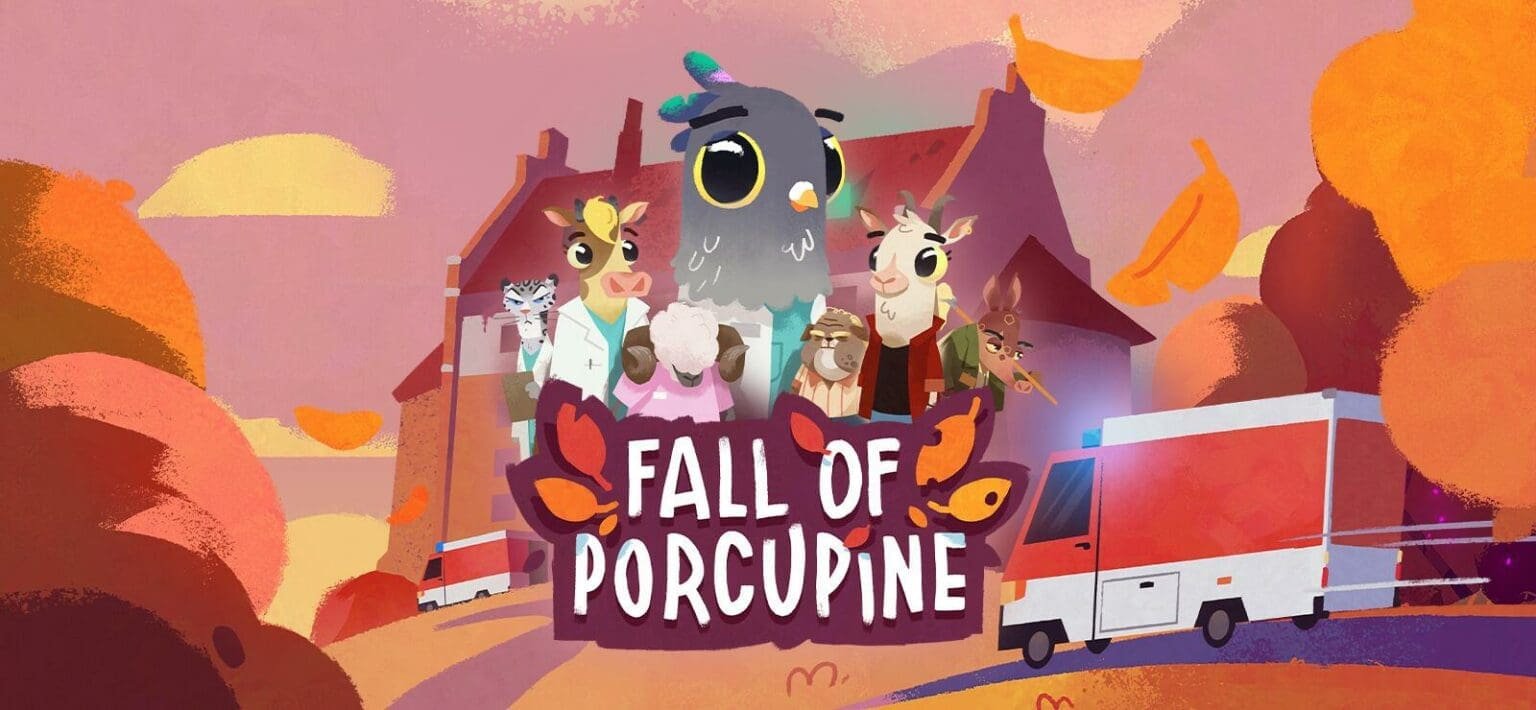Think of hospitals and visualize the underlying subtext – smells that scare you and anxiety that grips your thoughts. It’s not a pretty picture, and many of us will avoid the idea of roaming about a hospital unless absolutely necessary. And never for the life of me would I think a video game of all things would make this a charming experience.
Take a look at Fall of Porcupine, a game that revels in the idea of bringing out some heavy and bittersweet themes through adorable characters and artistic storytelling.
The town of Porcupine through the eyes of a young doctor
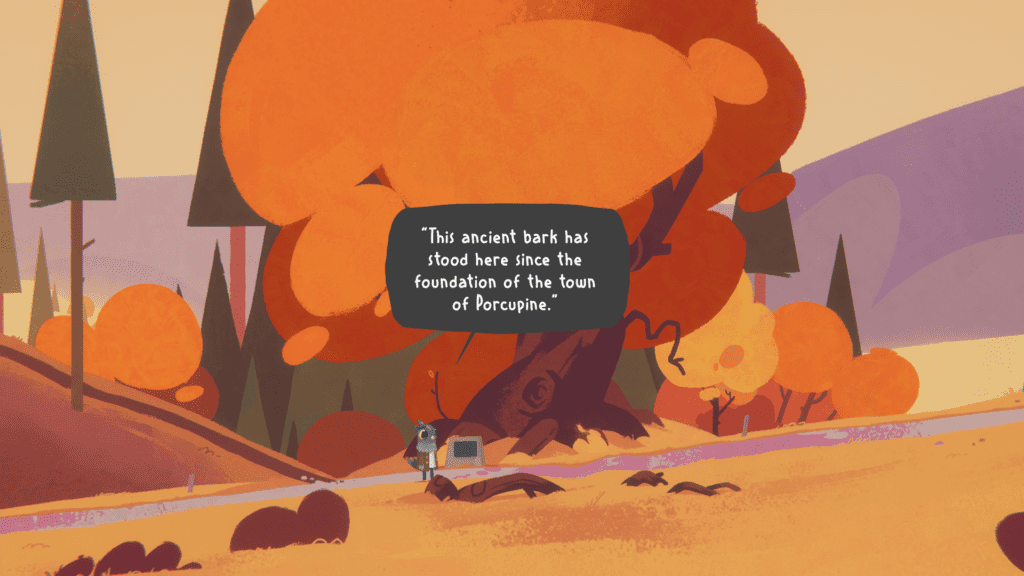
You play as Finley, a young doctor new to the unimaginative town of Porcupine. Finley is uniquely positive about his life and the people around him. His adorably silly charm will make you smile. A lot. He talks to plants, asks ‘things’ how their day is going, and builds little stories in his head about almost everything he comes across. If it weren’t for Finley’s endearing personality, I would be genuinely concerned for his mental health.
Finley’s curiosity is one of the many hidden gameplay features that drive much of the game’s narrative. You’re able to interact with many things and people and frame your thoughts around multiple ideas. Porcupine’s many environments have a lot to tell you, and it’s up to Finley’s sense of freedom that fills many questions you’ll have.
Much of the game revolves around Finley’s past, present, and future at St. Ursula, a hospital that clearly has infrastructure and administrative issues hiding beneath its intriguing characters. However, you’ll also spend a fair share of your time walking, running, and jumping across different parts of the town. The gorgeously crafted 2D environments and side-scrolling gameplay make this an incredible journey.
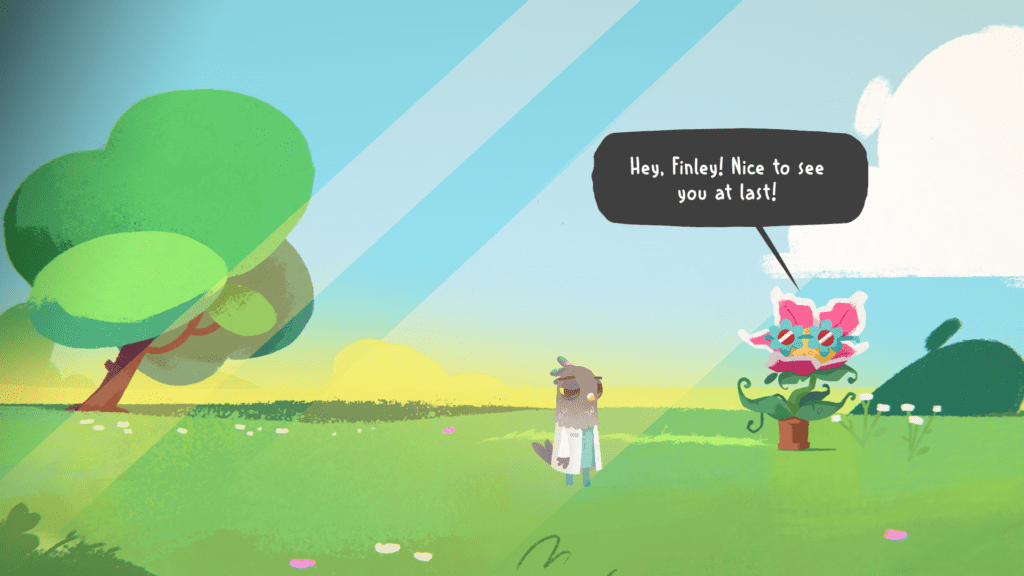
An art style that doesn’t shy away
Fall of Porcupine’s art direction is like watching one of your favorite cartoons from the early 2000’s. Since there’s almost no Heads Up Display, Map, or Markers, you’re essentially exploring the game’s world without a solid sense of direction. Sure, you will move in specific directions because you ‘have to’ as your tasks pile up. But I found myself spending a lot of time just moving my head to the cozy music that plays as you walk through the town’s day and night cycles.
As for the gameplay, you might do some platforming across stairs, tables, leaves and so on, but don’t be surprised when you completely miss one of these. The art style combines playable elements seamlessly with the game’s environments. For me, this was a great venture. The studio was confident about emphasizing cutscenes that blend into the gameplay and vice versa.
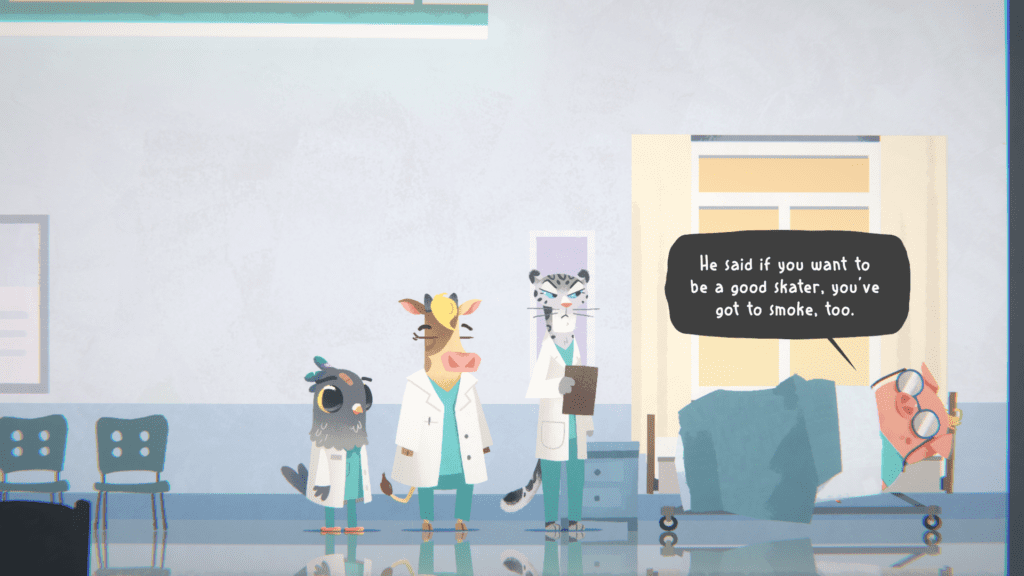
As you progress through the game’s many themes and characters, there’s a solid sense of style that takes the cake – how these characters voice their thoughts. There’s no voice acting or dialogue here – just lines of text. A lot of text.
You’ll be clicking through speech bubbles so many times that it becomes a part of your gameplay before you realize it. Think of old RPG games where characters would say a line, then continue their thoughts after you click the text box. However, it’s not as dull as it may sound. The characters have subtle shifts in expressions and movement. This, combined with some great writing, makes you believe the characters are talking to you.
Perhaps it’s my exposure to animated films that do it for me. When I hear miss-perfect Dr. Krowkoski is not impressed with Finley, I know her voice is grumpy. When caring for an old lady struggling with her memory, I know how sad and helpless she sounds. The art team deserves praise here, and their hard work shines through.
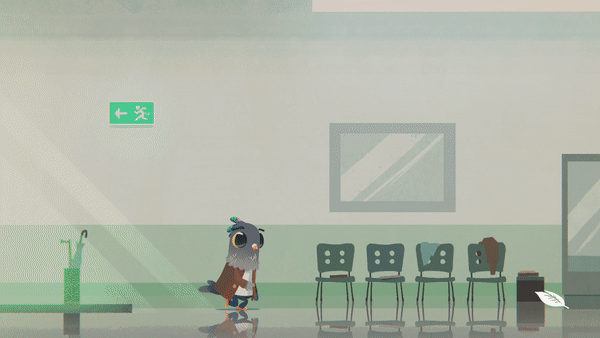
Porcupine’s narrative is its biggest strength
Fall of Porcupine’s central theme isn’t something that’s subtle and straightforward. It’s hidden beneath layers of different stories that you unravel through all the characters you meet. However, don’t be fooled by the game’s excellent art style. As charming, comforting, and pleasing these characters and environments look, much of it is equally terrifying.
Without spoiling it for you, there’s a key takeaway from the game’s focus on its healthcare system. The process of getting to know your patients and treating them directly ties into your empathy for them. As you start caring for them, you realize that people (or this case, anthropomorphic characters) make you wish for a better life for everyone. It’s reminiscent of how we often feel about our government, people in power, and politics that play into larger-than-life decisions.
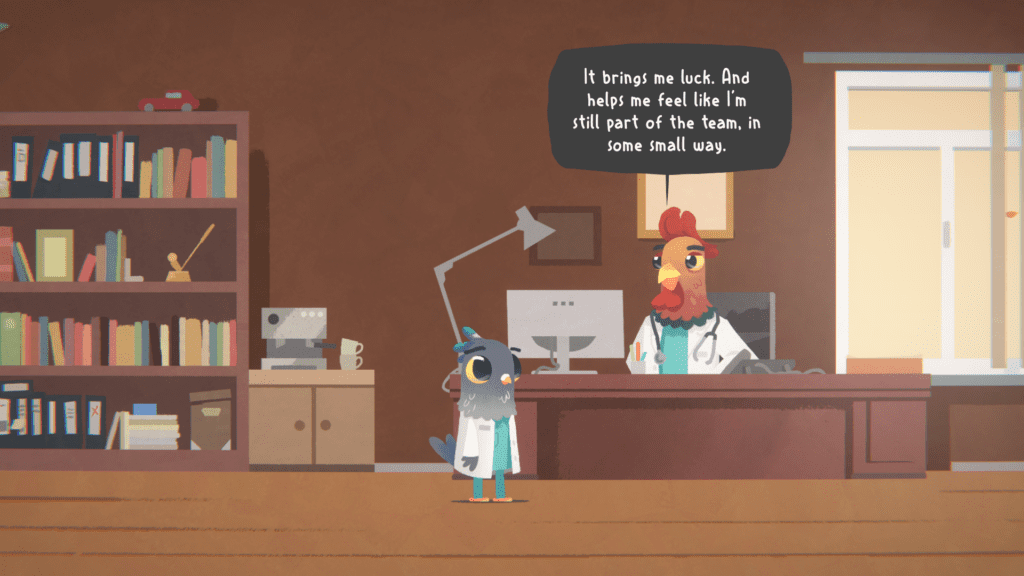
You’ll feel an array of emotions – heartfelt sympathy for the naivety of some of these characters, anger for how broken the system might appear, and anxious and excited about how certain relationships develop. Fall of Porcupine isn’t afraid of mixing themes here. However, the game wants you to be patient with it. No puns intended.
It’s not all dark and gloomy, though. Remember that sugar-coating I mentioned earlier? All of these themes are balanced by silliness, humor, and affection in its writing.
Finley’s curiosity and genuine willingness to be a better doctor comes through. Within a few minutes of playing the game, I understood his motivation, and that’s always a great sign. In fact, much of his intuition made me want to explore places I wouldn’t have otherwise. For instance, the poorly maintained basement of the hospital (where certain key events took place) or the bunch of pesky characters hanging out near the hospital’s back entrance in the dark.
Finley’s relationships and understanding of people lead him to new situations, and that’s a wonderful gameplay element. Not to forget – he loves to personify things. How his self-esteem felt the other day. How a lamp post might have a thing to tell me. What happens if the fridge could talk? And so on.
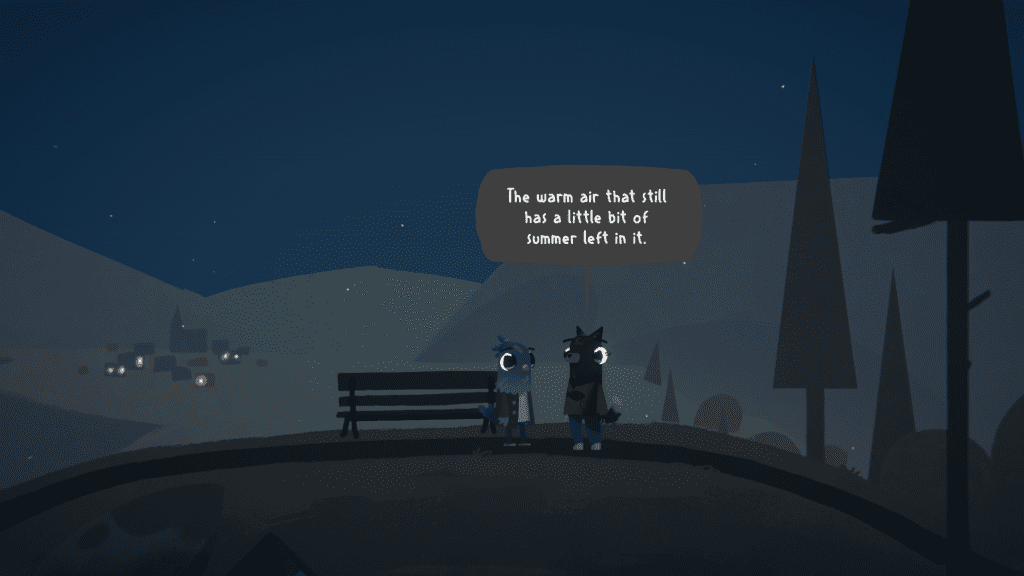
The gameplay either puts you off or entertains your childlike inquisitiveness
On the surface, Fall of Porcupine is purely a walking simulator with loads of clever writing, puzzles, and some platforming. Often times, more is needed to sell a typical gamer looking for a story that quickly blends into meaningful gameplay. However, Fall of Porcupine’s minigames have a lot of potential.
Say, your task for the day is to dress up a wound. You’ll be playing a little game of twister with your fingers as you try to press multiple buttons (or keys) to get the best score. In another example, there’s color-matching and symbol-solving. These fundamental gameplay loops might appear ‘meh,’ but the developers cleverly implement this into the game’s story and progression. Solving these puzzles through different minigames improves your experience with the game’s world. It might help you help a doctor. Or, it will put Finley in Dr. Krowkoski’s good books.
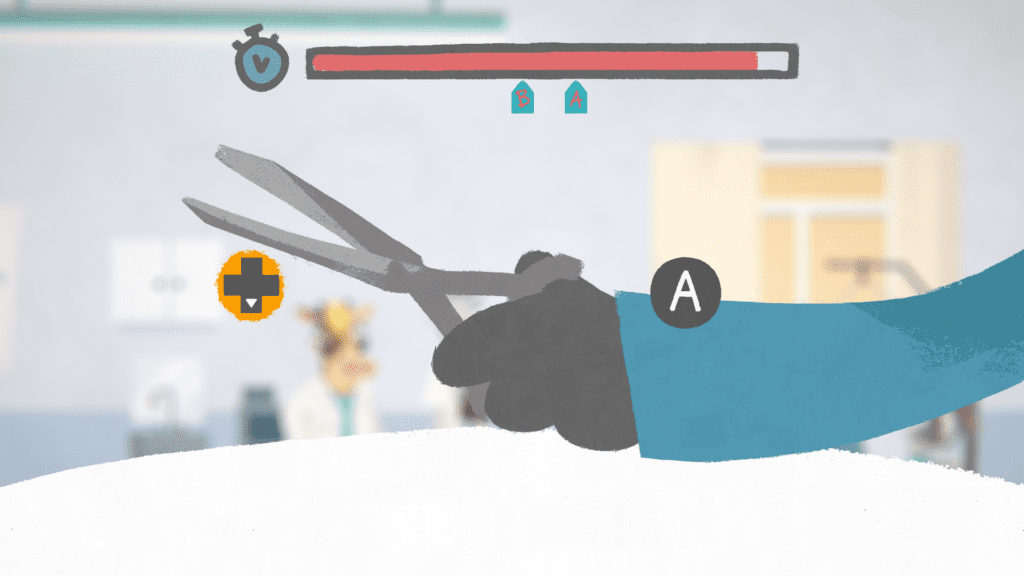
As you progress through the game, keeping track of things becomes more straightforward, thanks to your smartphone. You can track your tasks for the day, check in on relationships (and character bios), and so on. This keeps the art’s authenticity alive by not meddling around with an unnecessary HUD while giving players much-needed directions whenever needed.
Overall, the gameplay elements mixed with some brilliant art direction make for a strong trait that Fall of Porcupine seems to have mastered: using your empathy as a tool to progress. If I weren’t feeling too optimistic about a patient’s health, I would have dropped the idea of helping them out in the first place. However, the game’s terrific story elements make it easier for me to sympathize with those around me.
Having a small conversation about someone’s day, asking is someone is okay, making sure my patient is getting the best treatment, or ensuring I’m doing my job as a doctor – all of it matters in Fall of Porcupine.
Falls of Porcupine says a lot in subtle ways, but I wish there was more to it.
The ability to make dark themes light is a unique skill only a few developers have mastered. And I can safely presume that Critical Rabbit will master this niche. Fall of Porcupine has much to tell you but also requires your patience and attention. It’s not a game that I can recommend to everyone, but it’s a game that had me smiling through and through.
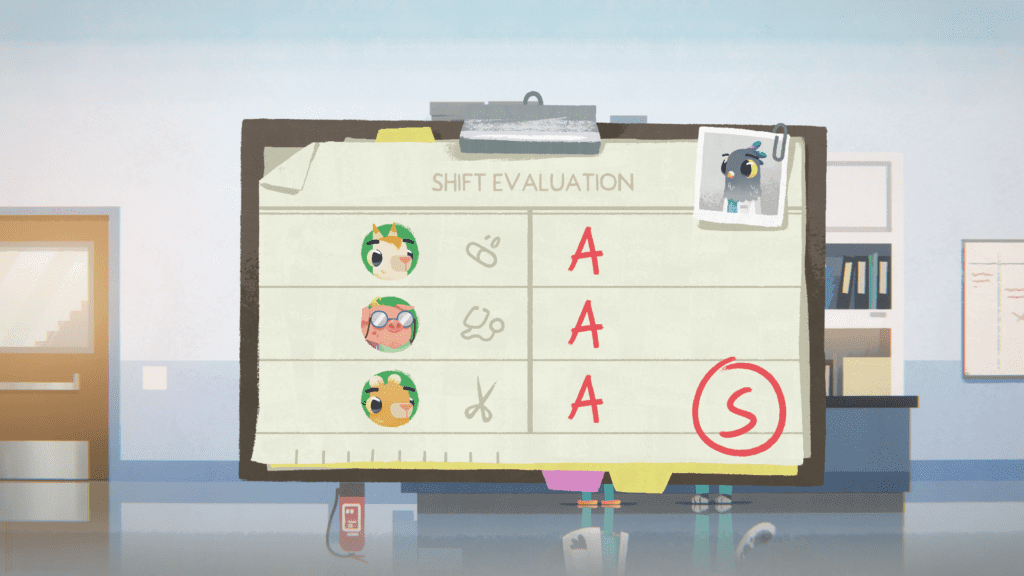
Who will like this game?
- If you enjoyed games like Night in the Woods and Spiritfarer.
- You are okay with clicking through a lot of speech bubbles.
- You are fine with slowly walking and jogging through multiple environments.
You can skip this one if:
- You want extremely challenging puzzles and minigames.
- You want stories to be told by voice acting and detailed animations.
- You want a sense of ‘combat’ and similar gameplay mechanics in a story-driven title.
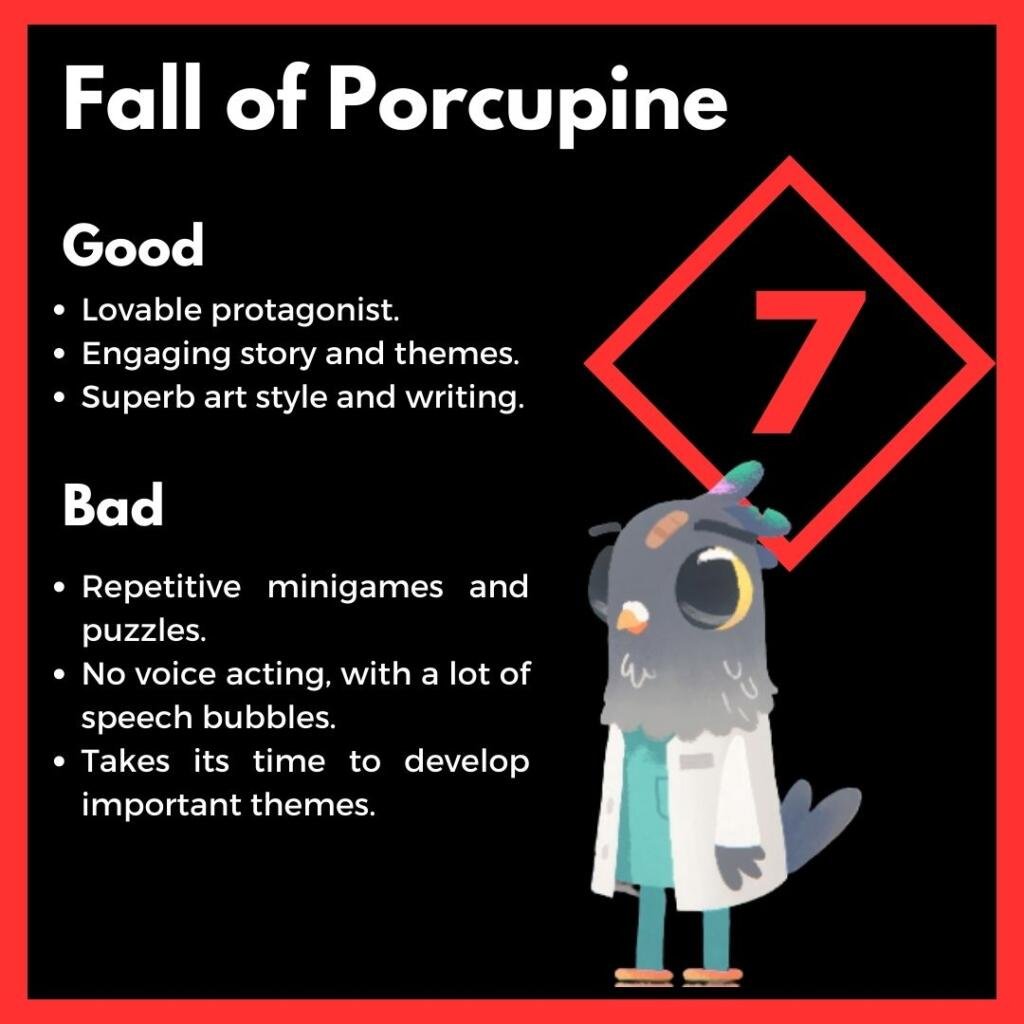
Rating: 7/10
All images are screenshots from the game’s Beta version sent to us by Critical Rabbit.





